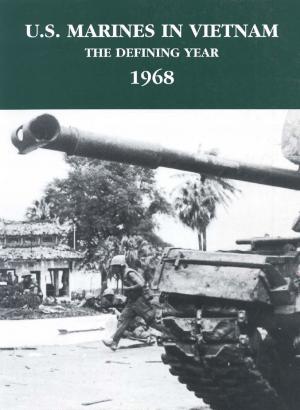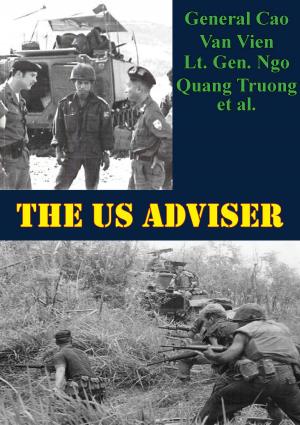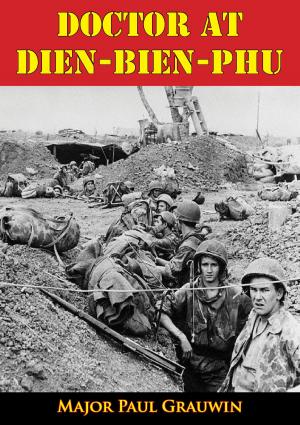The Fall Of South Vietnam: An Analysis Of The Campaigns
Nonfiction, History, Military, Vietnam War, Asian, United States| Author: | Major Gregory Heritage | ISBN: | 9781786250094 |
| Publisher: | Normanby Press | Publication: | November 6, 2015 |
| Imprint: | Normanby Press | Language: | English |
| Author: | Major Gregory Heritage |
| ISBN: | 9781786250094 |
| Publisher: | Normanby Press |
| Publication: | November 6, 2015 |
| Imprint: | Normanby Press |
| Language: | English |
This monograph addresses what operational level military factors enabled the North Vietnamese Army to defeat the former South Vietnamese Army during the Vietnam War’s final campaigns of 1975. The Vietnam War covered the full spectrum of conflict from terrorism, to guerrilla warfare, to a conventional war of maneuver. The final North Vietnamese offensive that defeated the South Vietnamese Army were conventional campaigns that provide opportunities for operational level planners to learn from the Vietnam experience.
The methodology followed in the monograph involves first establishing a basis of information on the strategic situation and the final campaigns, and then analyzing the campaigns with Cohen and Gooch’s model of military misfortune.
The communists began their final offensive campaigns in December, 1974 by seizing Phuoc Long Province. In March, 1975, they continued their offensive campaigns by conducting diversionary attacks in the north threatening Pleiku and then attacking the lightly defended South Vietnamese rear area. The Communists quickly captured the Central Highlands and then raced to the sea to divide the South Vietnamese Army (ARVN). The communists blocked the South Vietnamese attempt to retrograde from the Central Highlands and destroyed the ARVN II Corps. The communists then concentrated combat power to destroy the South Vietnamese six divisions isolated in the north. After destroying these divisions, the communist seized Saigon which ended the war.
The South Vietnamese suffered a catastrophic failure and lost the war because of their inability to learn, anticipate, and adapt. The South Vietnamese, failing to learn the basics of operational art, tried to defend the entire country through corps area defenses. Thus, they never defended in depth or concentrated combat power to defeat their adversary’s main effort.
This monograph addresses what operational level military factors enabled the North Vietnamese Army to defeat the former South Vietnamese Army during the Vietnam War’s final campaigns of 1975. The Vietnam War covered the full spectrum of conflict from terrorism, to guerrilla warfare, to a conventional war of maneuver. The final North Vietnamese offensive that defeated the South Vietnamese Army were conventional campaigns that provide opportunities for operational level planners to learn from the Vietnam experience.
The methodology followed in the monograph involves first establishing a basis of information on the strategic situation and the final campaigns, and then analyzing the campaigns with Cohen and Gooch’s model of military misfortune.
The communists began their final offensive campaigns in December, 1974 by seizing Phuoc Long Province. In March, 1975, they continued their offensive campaigns by conducting diversionary attacks in the north threatening Pleiku and then attacking the lightly defended South Vietnamese rear area. The Communists quickly captured the Central Highlands and then raced to the sea to divide the South Vietnamese Army (ARVN). The communists blocked the South Vietnamese attempt to retrograde from the Central Highlands and destroyed the ARVN II Corps. The communists then concentrated combat power to destroy the South Vietnamese six divisions isolated in the north. After destroying these divisions, the communist seized Saigon which ended the war.
The South Vietnamese suffered a catastrophic failure and lost the war because of their inability to learn, anticipate, and adapt. The South Vietnamese, failing to learn the basics of operational art, tried to defend the entire country through corps area defenses. Thus, they never defended in depth or concentrated combat power to defeat their adversary’s main effort.

![Cover of the book Thiet Gap! The Battle Of An Loc, April 1972. [Illustrated Edition] by Major Gregory Heritage](https://www.kuoky.com/images/2014/august/300x300/9781782893844-YLYK_300x.jpg)
![Cover of the book The Invasion of the Crimea: Vol. I [Sixth Edition] by Major Gregory Heritage](https://www.kuoky.com/images/2017/january/300x300/9781787203426-fpc1_300x.jpg)
![Cover of the book The War In The Crimea [Illustrated Edition] by Major Gregory Heritage](https://www.kuoky.com/images/2014/august/300x300/9781782895510-86ue_300x.jpg)

![Cover of the book With Havelock From Allahabad To Lucknow [Illustrated Edition] by Major Gregory Heritage](https://www.kuoky.com/images/2014/august/300x300/9781782894704-rmkg_300x.jpg)



![Cover of the book The Invasion of the Crimea: Vol. VIII [Sixth Edition] by Major Gregory Heritage](https://www.kuoky.com/images/2017/january/300x300/9781787203501-Uugu_300x.jpg)





![Cover of the book The Invasion of the Crimea: Vol. VII [Sixth Edition] by Major Gregory Heritage](https://www.kuoky.com/images/2017/january/300x300/9781787203495-t7t0_300x.jpg)